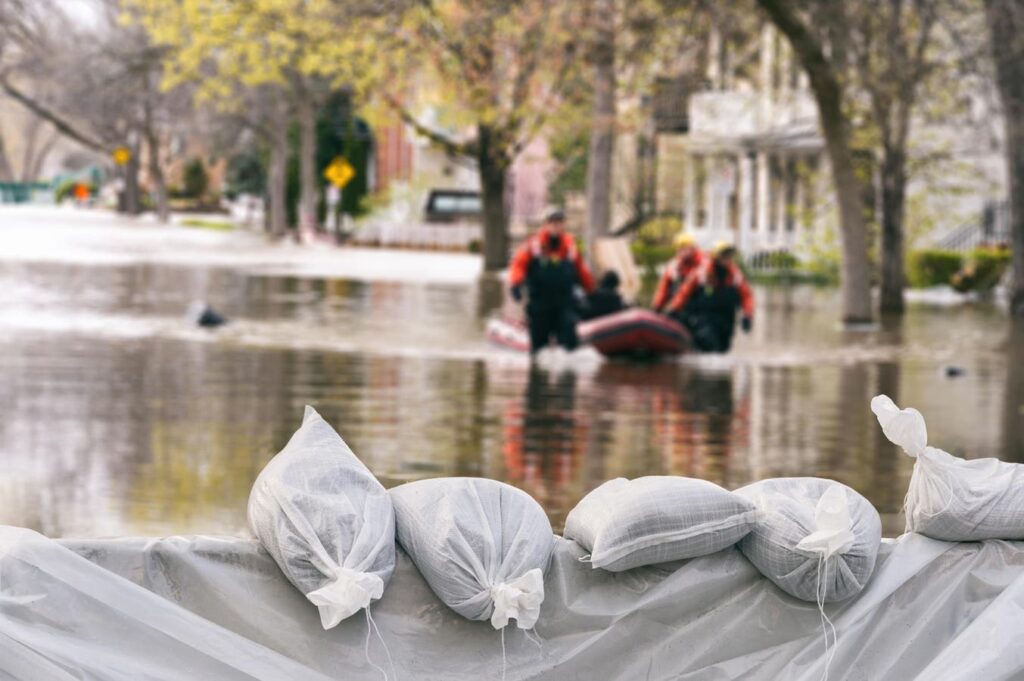Artificial intelligence is transforming climate change prediction and rapidly becoming one of the most powerful tools available to predict, manage and mitigate the effects of climate change. From forecasting floods to helping cities plan resilient infrastructure, AI is now at the forefront of climate tech innovation.
During a recent event hosted by the University of Virginia, a panel of experts in science, technology, insurance, and journalism discussed how AI is being deployed to address environmental risks. While concerns persist about the energy demands of AI and data centers, its potential to help us adapt to – and potentially mitigate – the worst effects of climate change is undeniable.
AI-Powered Climate Models Offer a New Level of Precision
“We aim to forecast future inundation levels to enhance preparedness,” said Dr. Madhav Marathe, executive director of UVA’s Biocomplexity Institute. His team is developing AI-driven “digital similars” of cities and regions – virtual models that simulate everything from rising sea levels to energy usage and population movement. These digital similars are like digital twins but use synthetic data to protect data privacy. These models enable planners and policymakers to test scenarios and design smarter, more sustainable responses before a disaster strikes.
Through partnerships with the National Aeronautics and Space Administration, the Centers for Disease Control and Prevention and the Department of Defense, Marathe’s institute is already applying AI to understand health impacts, improve regional evacuation strategies and support integrated energy systems. “We’re building AI and simulation-driven workflows and apps to better understand these co-evolving systems,” he said.
AI in Insurance: Predicting Weather Risk With Greater Accuracy
AI is also changing the game for climate risk management in the private sector. Matt Coleman, chief risk officer at venture-backed insurance advisor The Demex Group , explained how machine learning is enhancing the accuracy of insured loss forecasts. “We leverage machine learning and large datasets of weather events and insurance claims to better predict insured loss,” he said, adding that the insurance industry is actively valuing the economic impacts of climate change.
Demex focuses on what Coleman calls the “nicks and cuts” of climate risk – frequent events, such as thunderstorms, that cumulatively cost insurers more than big-headline disasters, like hurricanes and tornadoes. “A five-times increase in the frequency of thunderstorms since 1980 has created a protection gap that threatens insurers’ earnings” that is now rarely covered by reinsurers, he said. AI-powered models allow insurers to tailor policies to specific risks and even reopen markets that have become too unpredictable for insurers to cover. Coleman explained that for over three decades, the insurance industry has been leveraging sparse data sets on rare weather events. Demex utilizes hourly and daily data that accurately reflects the problem, along with stochastic and synthetic data sets, to inform actionable decisions.
Keeping the Human in the Loop
Despite the impressive capabilities of AI in climate applications, human oversight remains essential. “You can’t put AI in an autonomous role for prediction for large, consequential decisions,” Marathe warned, but it can be used autonomously for checking and validation. AI is most effective when used as a cognitive aid, providing insights and simulations that humans can interpret and act upon.
Coleman agreed, noting that in the insurance industry, “one of the most valuable aspects of a meteorologist is pattern recognition. Human interpretation is important to validate predications and quality control.” Demex uses “hindcasts” – testing models on past events – to validate predictions before deploying them in real-world scenarios.
The Ethics and Equity of Climate AI
Dr. Jess Reia, assistant professor at UVA’s School of Data Science, added a critical perspective on the ethical use of AI in climate adaptation. “To mitigate the climate crisis, AI systems need open, reliable data and humans require meaningful transparency mechanisms,” Reia said. She emphasized that algorithmic bias and top-down decision-making could deepen inequities unless models are developed and deployed with care.
“AI systems have become important tools in urban governance and climate change mitigation,” Reia added. “The systems promise solutions to complex issues while also contributing to the problems.” Issues of fairness, responsibility and inclusive design must be part of the climate AI conversation.
The Energy Footprint of AI and Data Centers
Of course, the irony isn’t lost on anyone: the same AI tools helping to solve climate challenges also consume large amounts of energy. Data centers that power machine learning models are proliferating in number and demand, leading to unsustainable energy consumption.
Still, AI is also being used to make data centers and buildings more energy efficient—optimizing load balancing, predicting demand, and reducing waste. But, as Marathe pointed out, “the rate of increase in energy usage may not be offset unless changes are significant.”
Local governments, particularly in data center hubs such as Virginia, are now exploring policies to cap energy use for data centers to preserve grid stability and maintain community access.
AI and Climate Change: The Path Forward
As AI becomes more embedded in how we plan, insure and respond to climate risks, its potential to accelerate climate adaptation and resilience is increasingly apparent. What’s needed now is thoughtful, inclusive design and responsible energy management.
Chris Mooney, the Pulitzer Prize-winning journalist who moderated the UVA discussion, asked a pivotal question: “Are we at the point where we can model a way to avoid a future disaster?”
The panelists’ answer was cautiously optimistic, with a strong caveat. “Fundamentally, these are co-evolving systems,” said Marathe. “Humans’ understanding of what is happening can lead to actions that impact the system.”
AI is transforming climate change prediction. With human involvement, the proper safeguards and a focus on transparency and equity, AI may be our most powerful ally in the race to tackle climate change.
Did you enjoy this story? Don’t miss my next one: Use the blue follow button at the top of the article near my byline to follow more of my work and check out my other columns here.
Read the full article here

